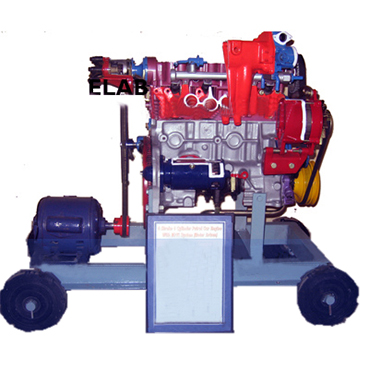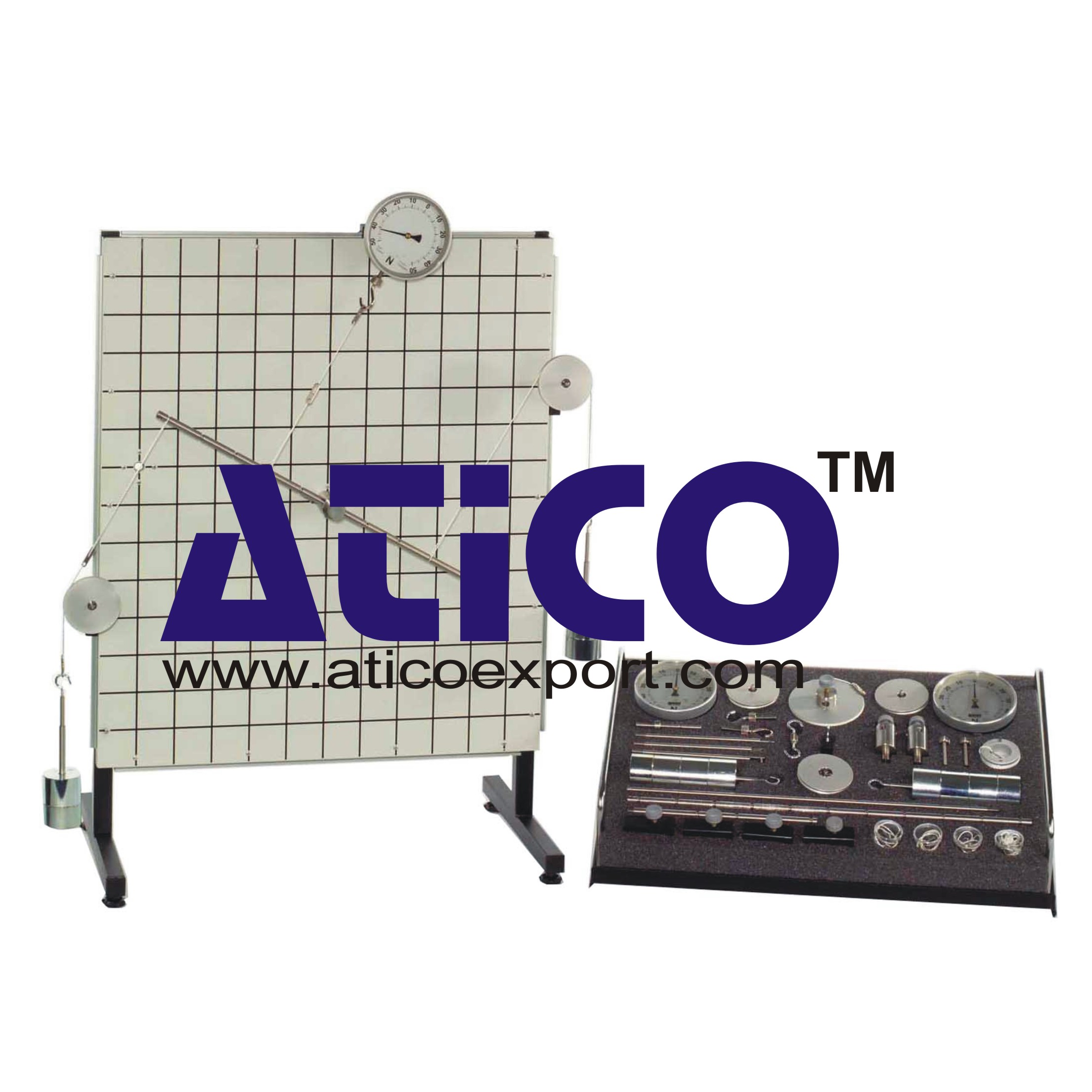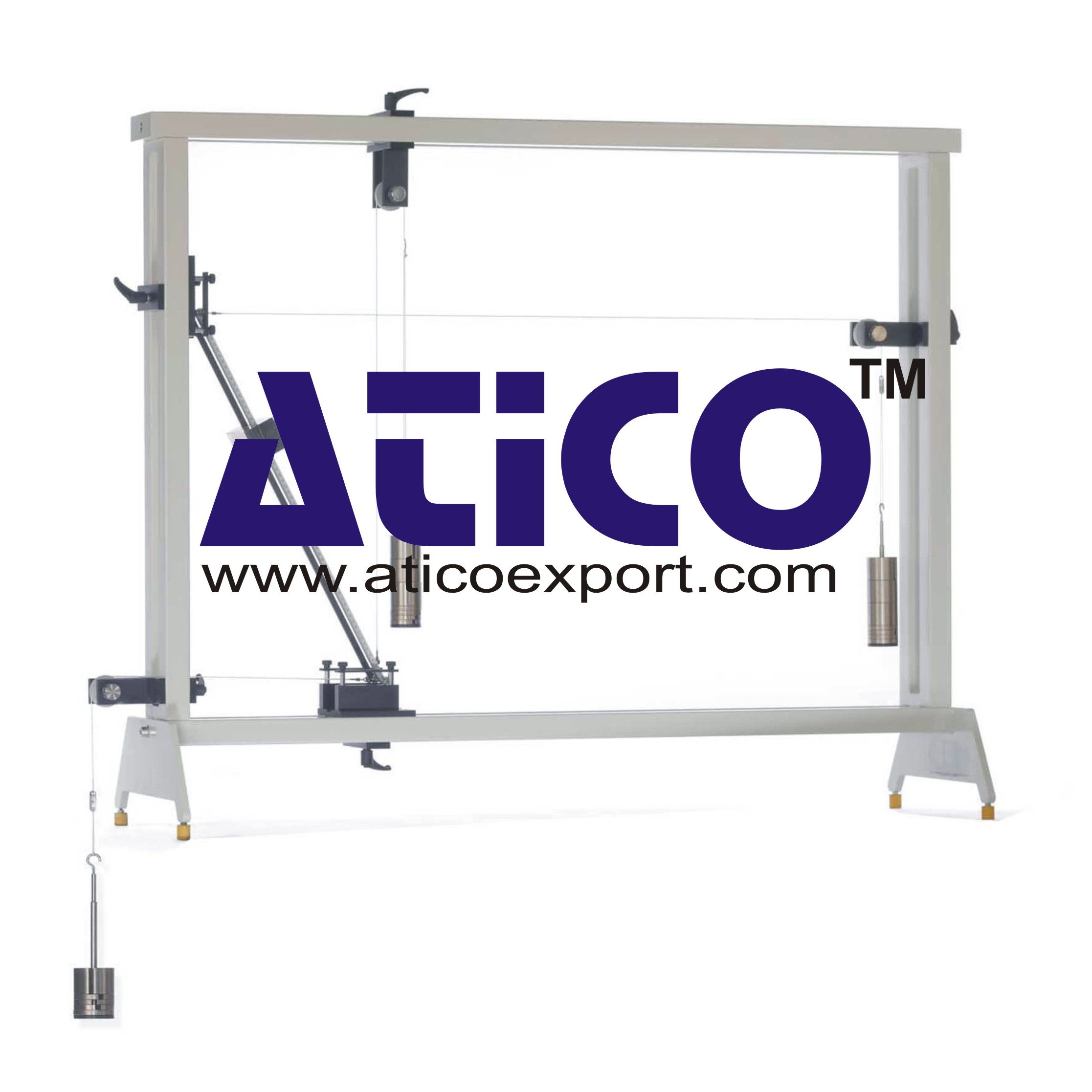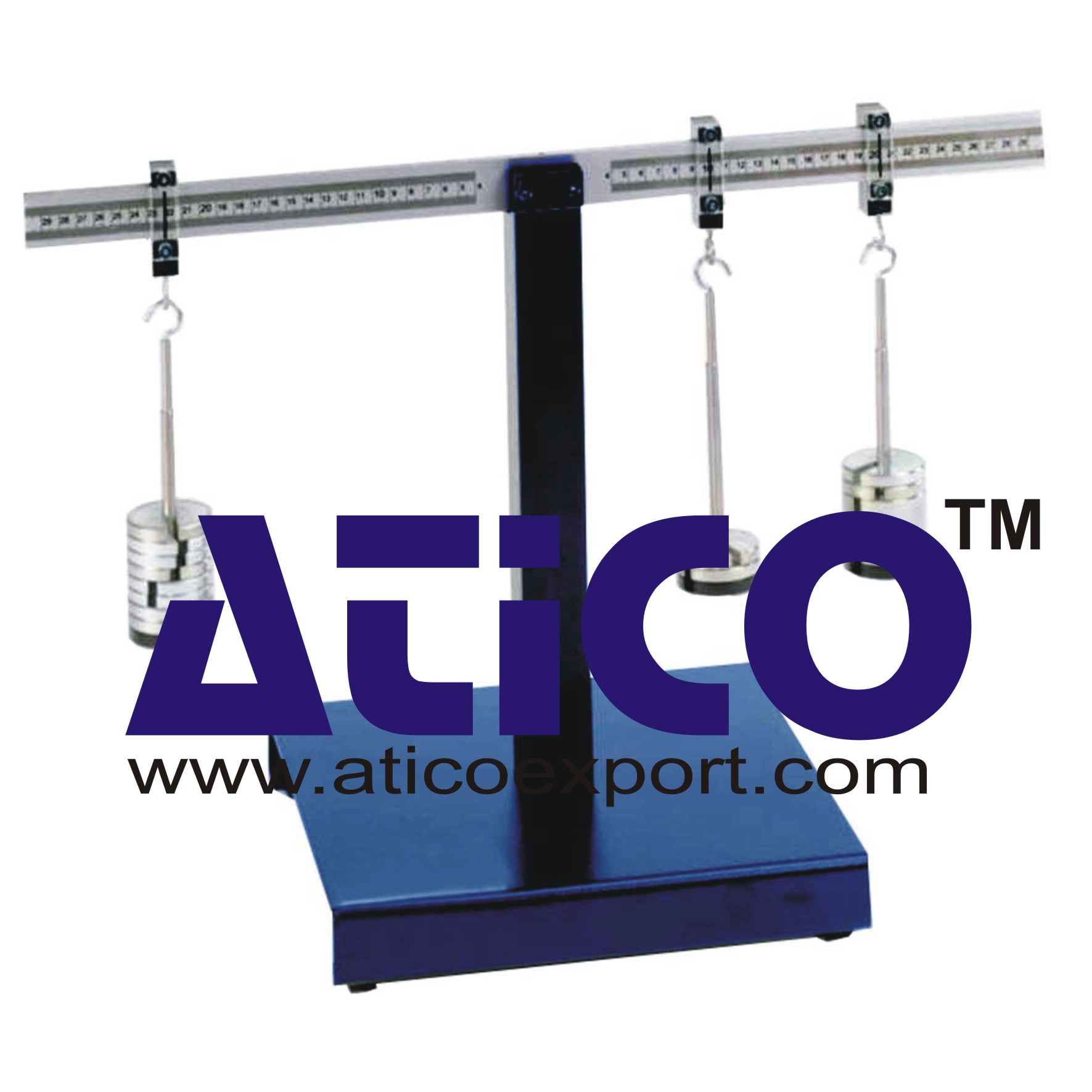Fundamentals Of Pressure Measurement
Categories: Engineering Lab EquipmentMeasuring pressure is important in the engineering industry, e.g. in plant, turbomachine and aircraft construction and in process engineering. Other fundamental factors such as flow rate or flow veloc...
Product
Description
Measuring pressure is important in the engineering industry,
e.g. in plant, turbomachine and aircraft construction and in process
engineering. Other fundamental factors such as flow rate or flow velocity can
also be determined based on a pressure measurement.
The experimental unit enables the user to measure the
pressure with two different measuring methods: directly by measuring the length
of a liquid column (U-tube manometer, inclined tube manometer) and indirectly
by measuring the change of shape of a Bourdon tube (Bourdon tube pressure
gauge). In a U-tube manometer, the pressure causes the liquid column to move.
The pressure difference is read directly from a scale and is the measure for
the applied pressure. In inclined tube manometers, one leg points diagonally
up. A small height difference therefore changes the length of the liquid column
significantly.
Learning Objectives/Experiments
Familiarisation with 2 different measuring methods:
Direct method with U-tube manometer and inclined tube
manometer
Indirect method with Bourdon tube pressure gauge
Principle of a Bourdon tube pressure gauge
Calibrating mechanical manometers
Specification
Basic experiments for measuring pressure with three
different measuring instruments
U-tube and inclined tube manometer
One Bourdon tube pressure gauge each for positive and
negative pressure
Plastic syringe generates test pressures in the millibar
range
Calibration device with Bourdon tube pressure gauge for
calibrating mechanical manometers
Technical Data
Inclined tube manometer
angle: 30°
Measuring ranges
pressure:
0…±60mbar (Bourdon tube pressure gauge)
0…500mmWC (U-tube manometer)
0…500mmWC (inclined tube manometer)
LxWxH: 750x610x810mm
LxWxH: 410x410x410mm (calibration device)
Total weight: approx. 40kg
quick overview :
Measuring pressure is important in the engineering industry,
e.g. in plant, turbomachine and aircraft construction and in process
engineering. Other fundamental factors such as flow rate or flow velocity can
also be determined based on a pressure measurement.
The experimental unit enables the user to measure the
pressure with two different measuring methods: directly by measuring the length
of a liquid column (U-tube manometer, inclined tube manometer) and indirectly
by measuring the change of shape of a Bourdon tube (Bourdon tube pressure
gauge). In a U-tube manometer, the pressure causes the liquid column to move.
The pressure difference is read directly from a scale and is the measure for
the applied pressure. In inclined tube manometers, one leg points diagonally
up. A small height difference therefore changes the length of the liquid column
significantly.
Learning Objectives/Experiments
Familiarisation with 2 different measuring methods:
Direct method with U-tube manometer and inclined tube
manometer
Indirect method with Bourdon tube pressure gauge
Principle of a Bourdon tube pressure gauge
Calibrating mechanical manometers
Specification
Basic experiments for measuring pressure with three
different measuring instruments
U-tube and inclined tube manometer
One Bourdon tube pressure gauge each for positive and
negative pressure
Plastic syringe generates test pressures in the millibar
range
Calibration device with Bourdon tube pressure gauge for
calibrating mechanical manometers
Technical Data
Inclined tube manometer
angle: 30°
Measuring ranges
pressure:
0…±60mbar (Bourdon tube pressure gauge)
0…500mmWC (U-tube manometer)
0…500mmWC (inclined tube manometer)
LxWxH: 750x610x810mm
LxWxH: 410x410x410mm (calibration device)
Total weight: approx. 40kg
Product
Reviews
add Review
reviews
No Review Yet.
Copyrights © 2025 All Rights Reserved by Atico














Product
Reviews
add Review
reviews
No Review Yet.